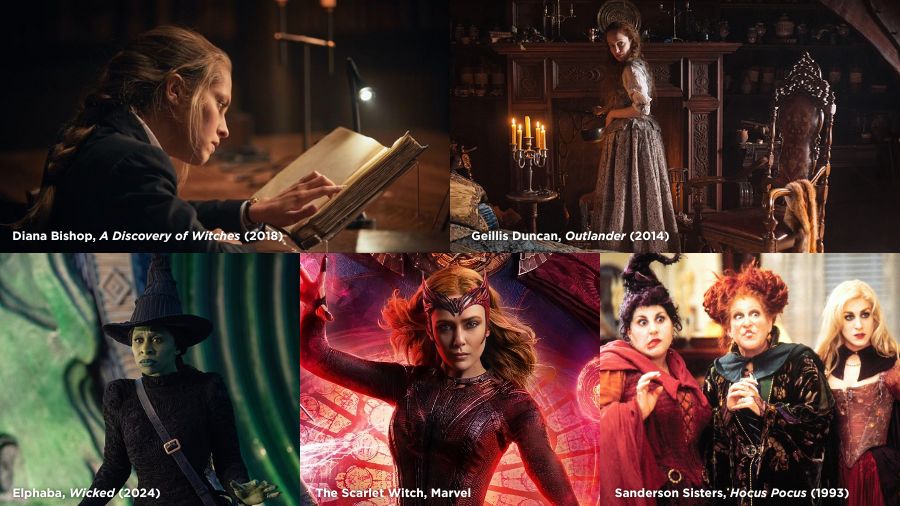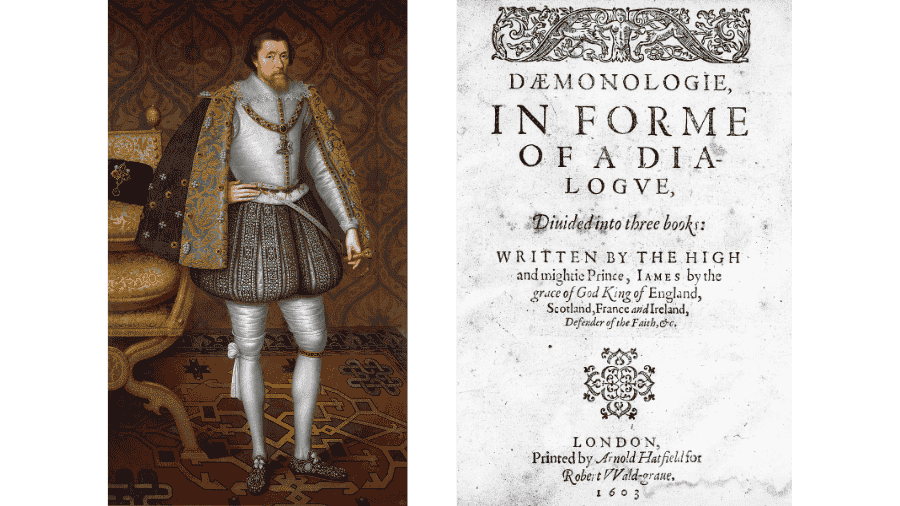Witches, Pop Culture and Ever-Present Myths
9th Oct 2025It’s that time of year. Autumn is in the air, pumpkins are decorating shelves and Halloween costumes are being planned. Maybe you’re even thinking of dressing up as a witch.
When we talk about witches today, you probably picture a tall pointy hat, a broomstick, maybe even green skin. But these fantastical depictions of witches are far from the historical truth of the matter.
Read on to discover the real stories of Scotland’s ‘witches’, or watch the video below, and join us as we remember Scotland’s accused as the dark half of the year begins.
Witches in Pop Culture
Today, ‘witch’ means something very different than it did in the 16th and 17th centuries.
Today we see depictions of witches in all kinds of media: Diana Bishop in A Discovery of Witches, Geillis Duncan in Outlander, Elphaba in Wicked, The Scarlet Witch in Marvel, the Sanderson Sisters in Hocus Pocus.

Depictions of witches in pop culture
Most of these are fantastical takes on the word. The characters have powers, and often as a biproduct are themselves empowered.
But some, like Geillis Duncan, were actually real people turned into fictionalised accounts. The real Geillis Duncan was executed in 1591 at the Edinburgh Castle Esplanade, after being accused of witchcraft by her employer. She was only a young woman at the time.
Witches of Scotland
For close to 200 years, Scotland suffered from a ‘Witch Craze.’
In 1563, the first Witchcraft Act was passed. Lasting until 1735, this act meant that witchcraft was punishable by death.
During the Scottish Witch Trials, around 4,000 people were accused and 2,500 executed for witchcraft. Per capita, Scotland’s rate of accusations was five times the European average.
It was also 100 times the number of victims of the Salem Witch Trials, which you might be more familiar with.

Woodcuts depicting the Scottish Witch Trials
84% of these victims were women, and all were innocent of their charges.
We tend to hold certain assumptions about accused witches throughout history: they were old women, they were healers, they were left-handed.
Though many of our assumptions might be exaggerated, one thing becomes clear: those accused of witchcraft during this time were regular people.
Agnes, Geillis, Janet, John: they were just like you.
Who Was Accused?
The most common cause of accusation was a quarrel. If someone had an argument with their neighbour one day and that neighbour then fell ill, that was grounds for accusation.
Healers were also accused, though not at the rates common myth might suggest. An estimated 9% of accused were associated with some kind of healing or midwifery.
Unfortunately, it wasn’t only ‘necromancers’ or ‘sorcerers’ who could get in trouble, but also those who consulted with them. This meant that if your local healer was accused of witchcraft, you could be as well.
What Lead to This Climate of Witch Trials?
A lot was going on in Scotland at the time of the Witch Trials.
It began, in 1563, during the Protestant Reformation with John Knox bringing religious change. Scotland had been a catholic country for a very long time. The queen at the time, Mary, Queen of Scots, was a proud Catholic and had no intention of changing that.
So it all kicked off in the midst of intense religious upheaval.
When King James VI became monarch, he was a paranoid and superstitious, perhaps understandably. After all, his mother was beheaded and he himself was eventually subject to the Gunpowder Plot.

King James VI and Daemonologie
Unfortunately, this meant he believed witches were also out to get him. He perpetuated the Witch Craze even more, going so far as to write a book on how to find them, titled Daemonologie.
Then, in the 1640s, we had civil war and plague. In the 1690s, we had famine.
For a lot of people, this time would have felt apocalyptic. So when the monarch suggested a scapegoat in witches, it likely would have provided people with a sense of comfort.
It would be a relief to believe that if they got rid of witches, the world would go back to rights. Sadly, it led to thousands of unnecessary deaths.
What now?
To know that the word 'witch’ was used the way that it was for so long, that so many people lost their lives over it, means that we now need to go back and correct it. We need to start to bear witness to the real stories of history’s so-called ‘witches’.
We’ve just shared a video talking further about the real history behind the myths, and the truth behind the Scottish Witch Trials.
Give it a watch and join us for a special remembrance edition of our Witches Trial & Truth tour, the week of Halloween, as we embrace Samhuinn traditions to honour those that have passed.

